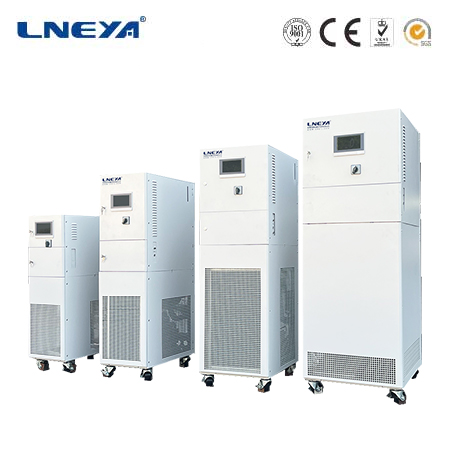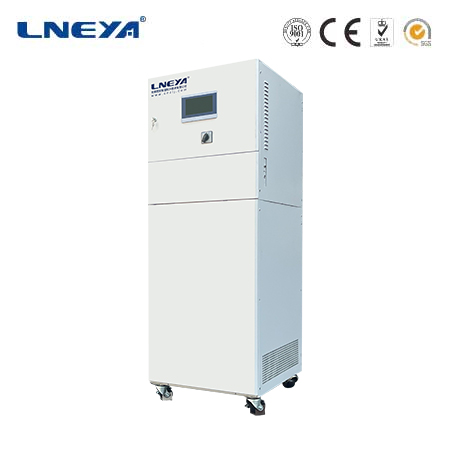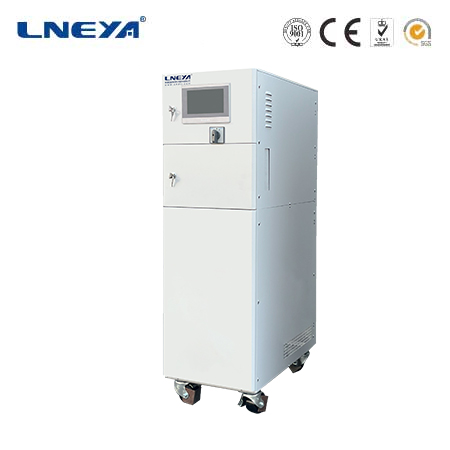air cooled water chiller
An air cooled water chiller is a type of refrigeration equipment that plays a crucial role in various industrial and commercial applications. It is designed to cool water by removing heat from it and transferring that heat to the surrounding air. This article will provide a detailed overview of air cooled water chillers, including their working principles, components, applications, advantages, and limitations.

Working Principles
The operation of an air cooled water chiller is based on the vapor compression refrigeration cycle. This cycle involves four main processes: compression, condensation, expansion, and evaporation.
Compression
The cycle begins with the compressor, which is the heart of the chiller. The compressor sucks in low-pressure, low-temperature refrigerant vapor from the evaporator and compresses it to a high-pressure, high-temperature vapor. This increase in pressure and temperature is essential for the subsequent heat transfer processes.
Condensation
The high-pressure, high-temperature refrigerant vapor then enters the condenser. In the condenser, the refrigerant releases heat to the surrounding air, which is forced over the condenser coils by a fan. As the refrigerant loses heat, it condenses into a high-pressure, high-temperature liquid.
Expansion
The high-pressure liquid refrigerant then passes through an expansion valve or a capillary tube. The expansion valve reduces the pressure of the refrigerant, causing it to expand and cool down. As a result, the refrigerant becomes a low-pressure, low-temperature liquid-vapor mixture.
Evaporation
The low-pressure, low-temperature liquid-vapor mixture then enters the evaporator. In the evaporator, the refrigerant absorbs heat from the water that needs to be cooled. As the refrigerant absorbs heat, it evaporates into a low-pressure, low-temperature vapor. The cooled water is then circulated back to the process or application that requires cooling.
Components of an Air Cooled Water Chiller
An air cooled water chiller consists of several key components, each of which plays a vital role in the overall operation of the chiller.
Compressor
The compressor is responsible for compressing the refrigerant vapor and raising its pressure and temperature. There are several types of compressors used in air cooled water chillers, including reciprocating, scroll, screw, and centrifugal compressors. The choice of compressor depends on factors such as the cooling capacity required, the operating conditions, and the cost.
Condenser

The condenser is where the heat from the refrigerant is transferred to the surrounding air. In an air cooled condenser, the refrigerant flows through a series of coils, and air is forced over the coils by a fan. The heat transfer efficiency of the condenser depends on factors such as the surface area of the coils, the air flow rate, and the temperature difference between the refrigerant and the air.
Evaporator
The evaporator is where the refrigerant absorbs heat from the water that needs to be cooled. In an air cooled water chiller, the evaporator is typically a shell and tube heat exchanger, where the water flows through the tubes and the refrigerant flows around the tubes. The heat transfer efficiency of the evaporator depends on factors such as the surface area of the tubes, the water flow rate, and the temperature difference between the refrigerant and the water.
Expansion Valve
The expansion valve is responsible for reducing the pressure of the refrigerant and controlling the flow rate of the refrigerant into the evaporator. There are several types of expansion valves used in air cooled water chillers, including thermostatic expansion valves, electronic expansion valves, and capillary tubes. The choice of expansion valve depends on factors such as the cooling capacity required, the operating conditions, and the cost.
Fan
The fan is responsible for forcing air over the condenser coils to transfer heat from the refrigerant to the surrounding air. The fan is typically driven by an electric motor and is controlled by a thermostat or a controller to maintain the desired cooling capacity.
Water Pump
The water pump is responsible for circulating the water through the chiller and the process or application that requires cooling. The water pump is typically driven by an electric motor and is controlled by a pressure switch or a controller to maintain the desired water flow rate.
Controller
The controller is responsible for monitoring and controlling the operation of the chiller. The controller typically includes sensors to measure the temperature, pressure, and flow rate of the refrigerant and the water, as well as controls to adjust the operation of the compressor, fan, water pump, and expansion valve. The controller can be a simple thermostat or a more complex programmable logic controller (PLC) or a microprocessor-based controller.
Applications of Air Cooled Water Chillers
Air cooled water chillers are widely used in various industrial and commercial applications where cooling is required. Some of the common applications of air cooled water chillers include:
HVAC Systems
Air cooled water chillers are commonly used in heating, ventilation, and air conditioning (HVAC) systems to provide cooling for buildings. In an HVAC system, the air cooled water chiller cools the water, which is then circulated through the building’s air handling units to cool the air.
Industrial Processes
Air cooled water chillers are used in a wide range of industrial processes to provide cooling for equipment and processes. Some of the common industrial applications of air cooled water chillers include plastic injection molding, metalworking, chemical processing, food and beverage production, and pharmaceutical manufacturing.
Data Centers
Air cooled water chillers are used in data centers to provide cooling for servers and other IT equipment. In a data center, the air cooled water chiller cools the water, which is then circulated through the server racks to cool the servers.
Healthcare Facilities
Air cooled water chillers are used in healthcare facilities to provide cooling for operating rooms, laboratories, and other critical areas. In a healthcare facility, the air cooled water chiller cools the water, which is then circulated through the air handling units to cool the air.
Food and Beverage Industry
Air cooled water chillers are used in the food and beverage industry to provide cooling for food processing, storage, and transportation. In the food and beverage industry, the air cooled water chiller cools the water, which is then used to cool food products, such as meat, dairy products, and beverages.
Advantages of Air Cooled Water Chillers
Air cooled water chillers offer several advantages over other types of cooling systems, including:
Easy Installation

Air cooled water chillers are relatively easy to install compared to other types of cooling systems, such as water cooled chillers. Air cooled water chillers do not require a cooling tower or a water supply, which simplifies the installation process.
Low Maintenance
Air cooled water chillers require less maintenance compared to other types of cooling systems, such as water cooled chillers. Air cooled water chillers do not have a cooling tower, which eliminates the need for regular maintenance of the cooling tower, such as cleaning, filling, and treating the water.
Energy Efficiency
Air cooled water chillers are designed to be energy efficient, which can help reduce operating costs. Air cooled water chillers use advanced technologies, such as variable speed drives and high-efficiency compressors, to optimize the operation of the chiller and reduce energy consumption.
Flexibility
Air cooled water chillers are available in a wide range of sizes and capacities, which makes them suitable for a variety of applications. Air cooled water chillers can be used in small, medium, and large-scale applications, and can be customized to meet the specific cooling requirements of the application.
Quiet Operation
Air cooled water chillers are designed to operate quietly, which makes them suitable for applications where noise is a concern, such as in offices, hospitals, and residential buildings. Air cooled water chillers use advanced noise reduction technologies, such as sound insulation and vibration isolation, to reduce the noise level of the chiller.
Limitations of Air Cooled Water Chillers
Air cooled water chillers also have some limitations compared to other types of cooling systems, including:
Limited Cooling Capacity
Air cooled water chillers are generally limited in cooling capacity compared to other types of cooling systems, such as water cooled chillers. Air cooled water chillers are typically used in applications where the cooling load is relatively low, such as in small to medium-sized buildings and industrial processes.
Higher Energy Consumption in Hot Climates
Air cooled water chillers may consume more energy in hot climates compared to other types of cooling systems, such as water cooled chillers. In hot climates, the air temperature is higher, which reduces the efficiency of the air cooled condenser and increases the energy consumption of the chiller.
Higher Noise Level
Air cooled water chillers may produce a higher noise level compared to other types of cooling systems, such as water cooled chillers. Air cooled water chillers use fans to force air over the condenser coils, which can produce noise. However, modern air cooled water chillers are designed to operate quietly, and noise reduction technologies are used to minimize the noise level of the chiller.
Limited Outdoor Installation
Air cooled water chillers are typically designed for outdoor installation, which may be limited in some applications. In some applications, such as in urban areas or in buildings with limited outdoor space, it may not be possible to install an air cooled water chiller outdoors.
Conclusion
Air cooled water chillers are an important type of refrigeration equipment that is widely used in various industrial and commercial applications. Air cooled water chillers are designed to cool water by removing heat from it and transferring that heat to the surrounding air. Air cooled water chillers offer several advantages over other types of cooling systems, including easy installation, low maintenance, energy efficiency, flexibility, and quiet operation. However, air cooled water chillers also have some limitations compared to other types of cooling systems, including limited cooling capacity, higher energy consumption in hot climates, higher noise level, and limited outdoor installation. When choosing an air cooled water chiller, it is important to consider the specific cooling requirements of the application, as well as the advantages and limitations of the chiller.
Related recommendations
testing of sensors
508Introduction to Testing of Sensors Sensors are ubiquitous in modern technology, used in a wide array of applications from consumer electronics to industrial automation. The testing of these sen...
View detailsheated circulating baths
427Heated Circulating Baths: A Comprehensive GuideIntroductionHeated circulating baths are specialized laboratory and industrial equipment designed to provide precise temperature control for various ...
View detailsair cooled chiller manufacturers in india
482Air-Cooled Chiller Manufacturers in India: An Overview Introduction to Air-Cooled Chillers in India Air-cooled chillers are essential in various industries in India, including manufactur...
View detailstexas chillers
537Understanding Texas Chillers Texas chillers encompass a range of cooling systems designed to meet the demands of various industries operating in the state of Texas. These industries may include...
View details
 LNEYA Thermal Test Chillers
LNEYA Thermal Test Chillers






HelloPlease log in